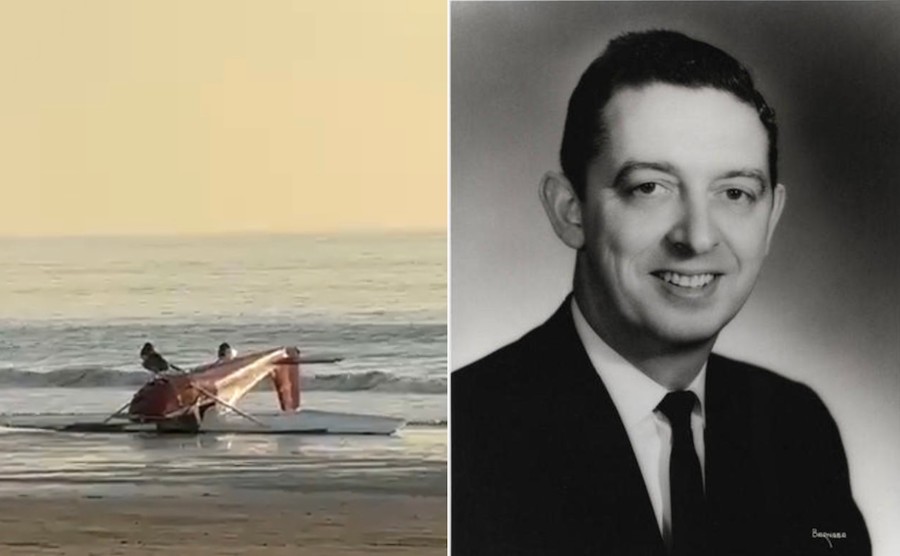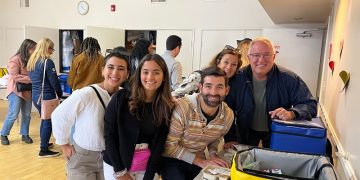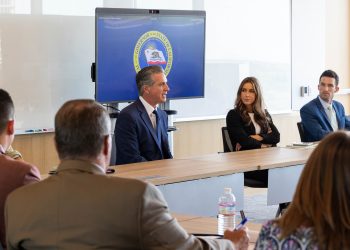
[Nearly four year ago, our colleague Mario Fonda-Bonardi prepared this cogent overview of the local impacts of sea-level rise. It’s as urgent and relevant today as it was then, if not more so.]
Dr. David Revell recently gave a presentation outlining what sea level rise might mean for Santa Monica. With the usual disclaimers about the uncertainty of all predictive modeling, he suggested that oceanographers are predicting for Santa Monica Bay a 2- to 5-foot rise by the year 2100. This range is not unusual since globally we are seeing a 1-inch rise per year while in Santa Monica Bay the rise has only been about one-eighth of an inch per year. This discrepancy cannot endure for long, so sometime in the coming decades we might see a sudden increase in the size of our own sea level rise (rises of up to 7 inches per year have been recorded in past geologic time). Please note that the projected sea level rise will not come to a screeching halt in 2100. Some studies (New York Times, March 30) suggest we may see an additional 5-foot rise from 2100 to 2150.
Although a one-eighth-inch rise per year now may sound trivial, the real punch comes when you add this to the typical 7-foot tidal fluctuations plus the 7-foot storm surge by periodic severe storms (in this case, storms of such intensity occur once every 50 years). For example, 33 years ago, in 1983, a putative 50-year storm tore off the western third of the Santa Monica Pier, requiring a multi-million-dollar reconstruction that continues with upgrades to this day. As a corollary, statistically, in the next 17 years, we might face the additional intensity of the so-called 100-year storm that might raise extreme water levels substantially higher than that 1983 storm.
If we combine the 100-year storm with only a 3-foot projected sea level rise, we lose the parking lot north of the pier and the lifeguard station headquarters, part of Muscle Beach and about half the bike path north of the pier. Taking it a step further, at a 6-foot sea level rise plus the 100-year storm, we would lose: large buildings along the boardwalk (the Sea Castle, Shutters, Casa del Mar), about half the buildings north of the pier, all the bike path and bathrooms plus virtually all the parking lots. Finally, Pacific Coast Highway would be cut at Channel Road. That level of damage is a serious blow to the tax base of the City and its tourist industry, not to mention the temporary loss of PCH. It’s unclear in this scenario what would happen to the pier.
There are other possible, less obvious effects of sea level rise unrelated to storm surge, including the problem of possible saltwater intrusion into our water table, the destabilization of buildings during an earthquake due to an enlarged liquefaction zone and possible basement flooding from a raised water table.
Finally, we need to add to sea level rise the possibility of tsunamis generated by far-off earthquakes. In 2015 the National Oceanic and Atmospheric Administration issued a tsunami forecast model for Santa Monica. It examined 19 hypothetical earthquakes from across the Pacific for their tsunami potential and found one that would have the potential to generate a significant wave (13 feet) large enough to endanger Santa Monica. The last time we had a significant tsunami event was from Chile in 1960 with a wave less than 6 feet in height that came ashore 300 feet and halfway into the parking lots south of Pico Boulevard. I remember it well; I was a child body-surfing the morning after it hit and had to be rescued by the lifeguards from the excessive undertow it generated. However, if that tsunami were to come ashore along with a 5-foot sea level rise, it could generate a 19-foot wave that would scrub everything clear to the base of the Palisades Park bluff as well as put a dent into the first block south of Ocean Park Boulevard.
SMa.r.t. (Santa Monica Architects for a Responsible Tomorrow) has always advocated preparing for tomorrow even if tomorrow is a generation or three away. In the spirit of hoping for the best but being ready for the worst, we recommend the following concrete steps we can take today to be ready for when it inevitably comes:
1. Initiate a study for preserving the pier.
The pier is arguably our most iconic asset and deserves the highest level of long term protection. This might involve protecting it by lengthening or raising its breakwater, which will continue to lose its protective capacity. It might involve planning how to physically raise the pier in place. The solution to these questions needs the expertise of marine engineers specializing in such contingent design. Certainly the new bridge access being planned should be designed to accommodate the fact that the pier will probably need to be raised vertically over the next decades.
2. Initiate a long-term study with Caltrans to protect PCH, which will eventually have to be raised higher than its current elevation.
Eventually, that raised highway will hit the ceiling of the McClure Tunnel. That choke point, already the scene of innumerable accidents and functioning at limiting capacity (three lanes squeezing down to two in both directions) needs to be reevaluated in light of sea level rise before such speculative plans as the 4th Street crossover, the Wyndham Hotel expansion or covering the freeway are initiated. If we cannot accommodate plans for raising PCH, the Downtown Community Plan should plan now for a tunnel or a highway at grade heading north to Santa Monica Canyon to pick up a raised PCH on the way to Malibu.
3. Continue monitoring the tidal gauge at the pier to determine how fast sea levels are rising to give us a sense of how much time we have to enact our contingency plans.
4. Initiate a study of how to protect our beach assets (bathrooms, bike paths, parking lots).
The study would identify cost-effective solutions, including when to retreat gracefully as opposed to the bankrupting cash hemorrhage of rebuilding them after every major storm.
5. Identify realistic funding sources commensurate with the challenge of protecting, adapting or retreating from our most valuable beachfront.
This literal rainy day fund would grow slowly and be deployed periodically when needed so we can avoid panicked responses to crises we know are coming our way.
Things we do today have consequences a century from now. More than 80 years ago, the Santa Monica breakwater was completed and over the decades the sand buildup from that breakwater, along with a one-time sand bonanza from dredging Marina del Rey, provided us about a 600-foot sand buffer to the ocean. That awesome buffer is the investment that now buys us time needed for our City to respond gracefully with a well-conceived plan to address the current sea level rise. We should be as prescient today as our civic ancestors were then. Their stewardship has given us such priceless jewels as the pier, our beaches, Palisades Park and our own water system. We should not waste the gift of their wisdom. We need, literally, to “get ahead of the wave.”
Mario Fonda-Bonardi for SMa.r.t. (Santa Monica Architects for a Responsible Tomorrow)
SMa.r.t.: Sam Tolkin, Architect; Dan Jansenson Building and Safety Commissioner, Architect; Mario Fonda-Bonardi, AIA, Planning Commissioner; Ron Goldman, FAIA; Thane Roberts, Architect; Bob. Taylor, AIA; Phil Brock, Arts Commissioner.












